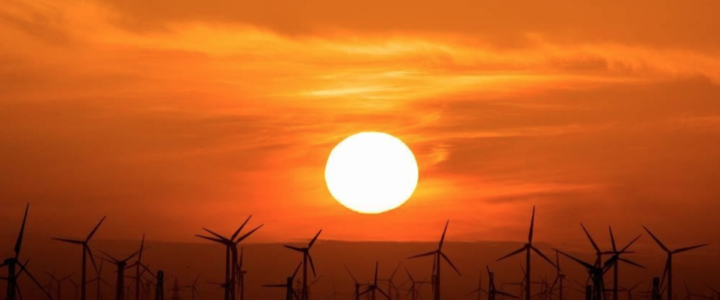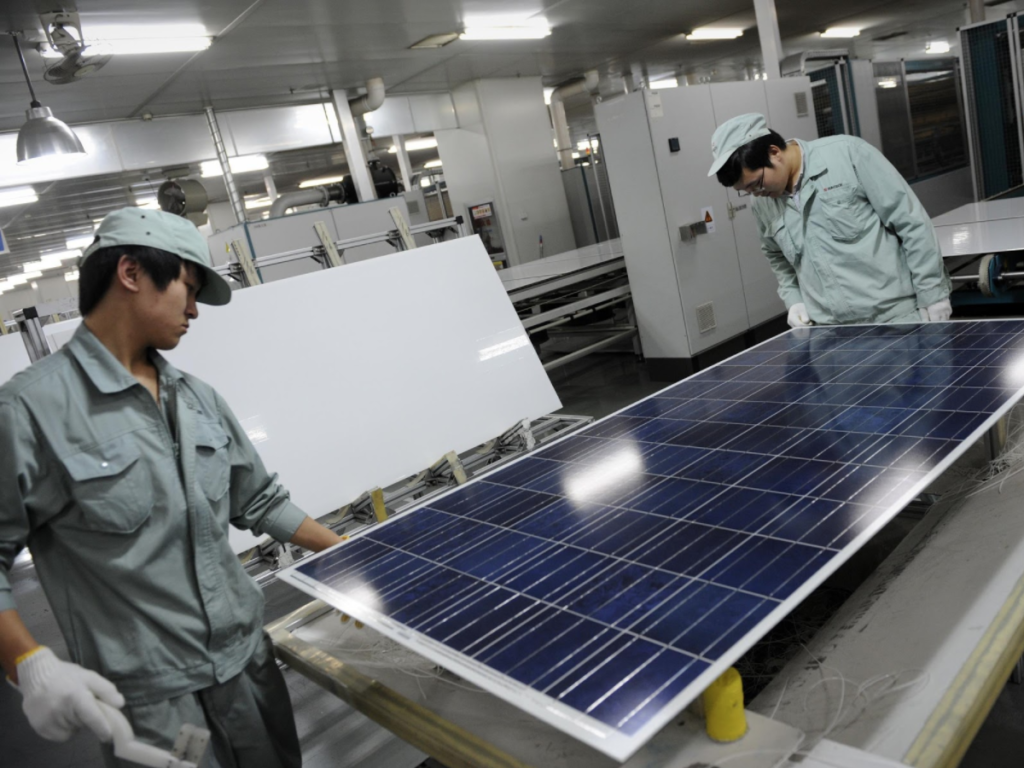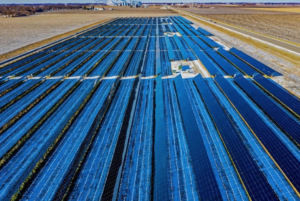
It would be easy to get lost in the barrage of negativity and bad news right now. However, I have some good news for you today! We’ve done a round up of some of the places from across the globe that are holding steady on their course to a more sustainable future, even in these tumultuous times, by harnessing renewable energies. Let’s take a quick trip round the world to see who’s doing what!
Scotland
The bonny far north country in the United Kingdom features land and coastline which are rugged and harsh, to say the least, but quite stunning. This country is perfect for wind farms, both out to sea and on land, as well as harnessing the raw power of the rough seas. So that’s what they’ve installed, very effectively. They’ve been using hydropower since the 1950’s – the same system is still producing electricity today – and they have the world’s largest tidal stream project as well as the world’s most powerful floating tidal turbine. Hywind, the world’s first floating wind farm, produces enough power for 20,000 Scottish homes. It’s no great surprise then, that between January and July 2019, Scotland generated 9,831,320 megawatt hours (MWh) of wind energy, according to WeatherEnergy. That’s enough to power 182 percent of all 4.47 million Scottish homes, or nearly 100 percent of homes in both Scotland and the North of England. So when they announced their plans to be using 100% renewable energy by the end of 2020, which coincides with Glasgow hosting the 26th Conference Of the Parties (COP26), it was never considered a stretch: they had reached 76.2% renewable power supply in 2018. And they have a legally-binding target to cut GHG emissions to net zero by 2045. So confident were they that they could properly harness nature’s power that they closed their last coal powered plant way back in 2016, and only have one source of non-renewable power, which is a lone gas-fired power plant. There doesn’t seem a better choice to host COP26 than Glasgow.

Germany
This European country has long been thought of as a leader on climate action and renewable energy. But the whole country isn’t moving at the same speed. One very small town in Bavaria is truly exceptional. Wildpoldsried, home to less than 3,000 people, is a powerhouse, quite literally. They have an enviable combination of renewable sources, ensuring they aren’t reliant on any one, should there be a complete lack of a natural element. They use wind, solar PV, biogas, hydropower, biomass heating, solar thermal and geothermal heating! This myriad of sources also keeps the grid stable, despite the massive production. Over-production, in fact, to the tune of 500% more than the town’s requirements!
The actions being taken throughout the rest of the country are not to be forgotten. 2019 saw reductions in GHGs of 6.3% after 2018 saw an increase in renewables reliance to 35% of total electricity generation. And they’ve started a plan to decommission all 84 of their coal-fired power plants over the next 18 years, meaning zero coal-fired power by 2038. No small step considering coal accounted for 40% of the country’s electricity in 2019. They’ve also been divorcing themselves of nuclear energy, deciding to close all of their 19 nuclear plants by 2022 on the back of the 2011 Fukushima disaster in Japan, and already closing down 12. Germany has now as much wind and solar generating capacity as coal, gas and nuclear combined, and they are planning a 55% reduction in GHG emissions below 1990 levels by 2030.
Spain
The Spanish have had a sudden change in heart towards carbon emissions and their economic dependence on fossil fuels. Until recently they’ve been dragging their feet on emissions reductions. In fact, between 1990 and 2017 their emissions grew by 17.9%, while the EU managed to collectively achieve a reduction of 23.5%. But suddenly they’ve set a course for net zero emissions by 2050! So what was the catalyst for the change in direction? The EU set up a very effective ’emissions trading system’ – a price was set for the release of carbon: in 2019 this was €25 per ton of carbon released. Suddenly coal was not as profitable as natural gas or renewables. In response, Spain have penned a plan which you’d think would be making those in the fossil fuel industry (and there were plenty, from 15 individual coal-fired power plants, plus more than 50 gas-fired) shake with fear. But, the plan is as meticulous in detail as it is bold, even receiving applause from Christiana Figueres, one of our personal heroes for her instrumental part in the 2015 Paris Agreement (to name only one of her enviable achievements). The reason for the support is because it includes legislation for fair transition for the 1,100 recently/soon-to-be unemployed coal workers. 7 of those 15 plants closed in June this year; 4 have applied for closure; and the remaining 4 are hanging in the balance, not expected to last much longer due to those above mentioned EU regulations. The fair transition contracts will include early retirement, or re-skilling in clean energy or environmental restoration. Renewable energy installations jumped by a whopping 10% throughout 2019 and their 50 gas plants are operating at less than 25% capacity. To achieve their net zero emissions by 2050 goal, first they must see an interim result of 35% total electricity share to green energy by 2030, and they will install 3,000 MW of wind and solar capacity every year for the next decade, generating tens of thousands of jobs.
China
It’s long been known as one of the very highest polluters and carbon emitters. But it was also where many Western countries like the Unites States, United Kingdom and Australia, would send trash to be dealt with. So the blame for the pollution seems perhaps a little unfounded. Regardless, China has also always held tight to coal power. And while they’re not shutting down coal any time soon, they’re certainly ramping renewable energy up. Their main motivator seems to be price, from two perspectives – they’re on a timeline to have renewable projects built before the national subsidy is removed mid 2021; and they’re trying to achieve price parity with coal. The China National Nuclear Corporations 50MW wind farm did this in August 2019, and China General Nuclear Power Group’s 160MW solar farm is currently meeting this goal. But whatever the motivation, the outcome of clean energy is the same, and we won’t underappreciate that! In fact, China still has the largest renewable capacity in the world. And it’s important to note that China is also the leading the world as number one manufacturer of renewable energy equipment. But let’s also remember that they are in conversation about building hundreds of new coal powered plants throughout the 2020s. A recent study found that if China uses the most cost-effective renewable energy resources, it could generate more than 60% of its electricity from “non-fossil” sources by 2030 – including wind, solar, hydro and nuclear – at a cost that’s around 10% lower than current pricing. But will it do so? This country doesn’t make a consistent case one way or the other. So let’s end by applauding their current renewable energy capacity and give gratitude for the production of the equipment used elsewhere in the world.

Australia
The country which was on fire for 4 months, and subsequently lost in excess of 3 billion wildlife, and has a Prime Minister who took a lump of coal into Parliament to show that it’s nothing to be scared of, is making some good grounds on renewables. Given the abundance of sun and expansive space, this shouldn’t be a surprise. The City of Sydney (a council area which incorporates the CBD and some inner suburbs) have recently flicked the switch to be powered by 100% renewable energy! The sources are both wind and sun, from 3 different locations outside of Sydney. The renewable energy will power approximately 115 buildings, 75 parks, 5 pools and 23,000 street lights. The carbon emissions reduction is in the region of 20,000 tonnes per year.

In a large area of New South Wales plans have been unveiled for a Renewable Energy Zone (REZ) which has an 8,000 MW capacity (only a drop off the current 10,000 MW produced by the state’s coal-powered plants, but will be on par once the planned closure of one of them takes place in 2023). This will be from a combination of wind and solar installations, and be incredibly important financial and employment development for the region, and could meet 30% of the state’s annual energy use.
Still in Australia, the University of Queensland is now running on 100% renewable energy, from a 64 MW solar farm. It’s enough power for about 27,000 average homes – which it likely will, once hooked into the grid. The money generated from the energy generated will completely offset the University’s AU$20 M annual power bill, and is reducing carbon emissions as though 50,000 cars have been taken off the road for a year.
United States
Closer to home now, and New York Governor, Andrew Cuomo, is setting plans in motion to produce 4,000 MW of clean energy. This will be achieved through the largest combined clean energy solicitation that the US has ever seen. The solicitation includes a multi-port strategy and requires offshore wind generators to partner with any of 11 prequalified New York ports (from Long Island to the Capital Region) to stage, construct, manufacture key components; or coordinate operations and maintenance of the sites. But it also includes land based renewable energy procurement, seeking to harness 1,500 MW to power approximately 500,000 homes. Cuomo seeks to provide NY with 70% renewable energy by 2030. This plan is ambitious, and would have been even in the year 2019…but it’s the extreme difficulties that 2020 has brought New York that gives Governor Cuomo the extra metal to hold his ground on these plans, stating he will “remain laser-focused on implementing our nation-leading climate plan and growing our clean energy economy…”

Texas is taking advantage of their unique sunny disposition – with the Roadrunner PV solar park set to be completed by the end of 2020, at which time it will have capacity for 1.2 TWh of power, which will offset 800,000 tons of carbon emissions every year. And Texas also has wind – a new installation began operating in March this year and will produce enough electricity for 45,000 homes.
All this renewable activity has seen the sixth consecutive year for coal use to fall in the US, triggering cries that the end of coal is nigh. For the first time in 130 years, renewable energy sources provided more power than coal powered plants. Renewables from all sources accounted for 11% of energy production in 2019, which only just edged out coal; nuclear provided 8% of power; while the behemoth that is petroleum was still responsible for 37% of energy supply; and gas came in second, answering 32% of the United States’ energy demand.
There are good, important and powerful (ahem) things happening in the renewable energy sector. And not a moment too soon, of course. We must do all that we can to keep the momentum going. And such things include switching our household energy provider to a company which (truly) provides clean energy. There’s no doubt this takes a little bit of time to research, but the planet’s worth it. Also find local renewable energy projects and learn how you can help – it might be petitioning government for funding, or working to get local farmers on board with using their land for solar installations (some farmers in Australia found that their livestock were happier as they had some shade to hide in, and the grass grew better for the same reason!). Lastly, and I know it’s not the most fun subject, but think about where your money is – which bank has your cash; which superannuation fund is investing your hard-earned retirement money; which school are you paying fees to…make sure none of those institutions are financing fossil fuels. We must start raising our voice about all the things we can change, and remember that COVID-19 hasn’t completely shackled us from making a positive difference.



